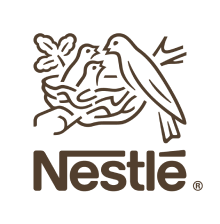
10 Tips to Achieve Work-Life Balance
Creating and maintaining a healthy work-life balance is crucial to our personal and professional development. It’s what allows us to bring our best selves into all areas of our lives—family, community, and work. Essentially, work-life balance is defined as the time that someone spends working versus the time spent doing fulfilling activities or tending to personal responsibilities. Taking this time is necessary to replenish our mental and physical health, and it can even lead to a boost in productivity and reduction of stress.
Finding this balance, however, can be tricky. It’s a constant negotiation and evaluation of where and how we are expending our energy.
At Nestlé Purina, we put our people first. We prioritize the holistic wellness of our associates through comprehensive benefits and resources to help them achieve work-life balance. Our competitive total rewards package includes programs such as our Employee Assistance and Spring Health Programs, Lifestyle Spending Account Program, and other finance tools and benefits that support our associates’ physical, financial, and emotional wellbeing. When our associates take time to focus on themselves and find a work-life balance, they bring a stronger, more productive version of themselves to work.
10 tips from our associates to achieve work-life balance:
- Schedule paid time off as family—By scheduling PTO as a family, you prioritize personal and family needs over work commitments. It helps you strike a balance between your professional and personal life, ensuring that you allocate time for both aspects. This balance is crucial for maintaining mental and emotional well-being.
- Keep an updated calendar—Keeping an updated calendar can provide a visual representation of your commitments and responsibilities, allowing you to effectively manage your time and avoid overbooking. It can help you prioritize personal and family activities alongside work obligations, ensuring a balanced distribution of time and reducing the risk of burnout.
- Make checklists and quarterly goals for both work and personal life. Setting quarterly goals and creating checklists can give you a clear roadmap and structure for your tasks and priorities. It allows you to prioritize and allocate time for both work-related and personal goals.
- Then…check in on goal progress. Checking in on goal progress can provide a sense of accountability and motivation to stay on track with priorities.
- Schedule reminders for five-minute breaks throughout the day. Taking a five-minute break throughout the workday can present a moment of relaxation, reducing stress and increasing productivity.
- Check emails only during work hours. Checking emails only during work hours can help you set clear boundaries between work and personal life. It prevents the intrusion of work-related stress and distractions during non-work hours, allowing for dedicated time to focus on personal activities, relaxation, and spending quality time with family and friends.
- Meditate 10 minutes a day. Meditating promotes mental clarity, reducing stress, and increasing overall well-being. It provides a dedicated time for self-reflection, relaxation, and mindfulness, allowing for a more balanced approach to life.
- Communicate needs with leadership. Communicating your needs with leadership can allow for open dialogue and potential accommodations, such as flexible work hours or workload adjustments. These can help strike a balance between work responsibilities and personal life obligations.
- Set boundaries around log in and log off times. Setting these boundaries can help you clearly define when work begins and ends. It establishes a separation between work and personal life, allowing for dedicated time to unwind and engage in personal activities.
- Allow for flexibility. Allowing for flexibility can deliver a freedom to adapt your schedule to accommodate personal needs and responsibilities.




